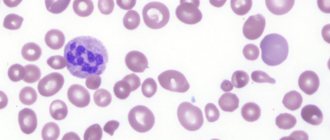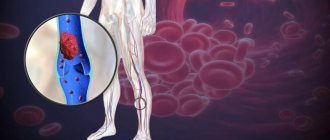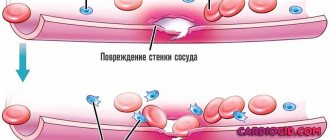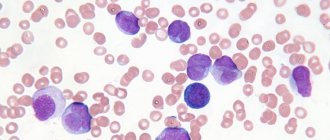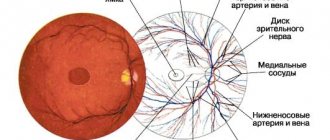However, it has been found that approximately 98% of people in developed countries do not get the recommended amount of potassium from their diet. The modern diet is likely to blame, with its emphasis on processed foods over whole plant foods such as fruits, vegetables, legumes and nuts.
However, a low-potassium diet rarely causes potassium deficiency or hypokalemia.
Deficiency is characterized by blood potassium levels below 3.5 mmol/L.
Potassium deficiency can also develop when your body suddenly loses a lot of fluid, often as a result of chronic vomiting, diarrhea, excessive sweating and blood loss.
Here are 8 signs and symptoms of potassium deficiency.
Weakness and fatigue
Weakness and fatigue are often the first signs of a lack of potassium in the body. There are several ways that a deficiency of this mineral can cause weakness and fatigue.
First, potassium helps regulate muscle contractions. When your blood levels of this mineral are below normal, your muscles are unable to contract as well as they should. A deficiency of this mineral can also affect how your body uses nutrients, leading to fatigue.
For example, some evidence suggests that potassium deficiency in the human body can impair insulin production, leading to high blood sugar levels (hyperglycemia).
Conclusion:
Since potassium helps regulate muscle contractions, a deficiency can result in weaker muscle contractions. Additionally, some evidence suggests that a deficiency may impair insulin production, which can lead to fatigue due to excessive increases in blood sugar.
Causes
Normally, the amount of this trace element in urine should be about 15 mmol/l. When this indicator increases, they speak of hyperkalemia, and, accordingly, when it decreases, they speak of a disorder such as hypokalemia. The daily requirement for an adult of this microelement is 3 g, and for a child it is 16–30 mg per kg of weight.
It must be said that this microelement takes an active part in regulating water balance and electrolyte balance, so its lack in the body leads to disruption of metabolic processes and affects hemostasis. Potassium also helps eliminate toxins, which allows the body not to experience symptoms of poisoning with harmful substances.
As mentioned above, the causes of potassium leakage can be internal (renal) or external (extrarenal). External causes of the development of a disease such as hypokalemia include insufficient intake of this microelement from food. In addition, such a disorder may occur due to excessive excretion of potassium due to the development of vomiting or diarrhea in a person. Extrarenal causes also include potassium redistribution, which can occur as a result of the use of certain medications (insulin, epinephrine), as well as with rapidly growing tumors.
If we talk about the renal causes of this disorder, then these include taking certain antibacterial drugs, for example, penicillin or gentamicin. Other causes are also drug-related:
- taking diuretics;
- taking amphotericin B and other drugs.
Possible causes of hypokalemia
There are also hormonal-induced causes in which hypokalemia develops as a consequence of pathological processes in the body, for example, in diseases of the adrenal glands, malignant hypertension, certain types of tumors, etc.
Sometimes the causes of a pathology such as hypokalemia are more banal, and consist in the constant experience of stressful situations and emotional turmoil. People who are actively involved in sports also suffer from the disorder. In particular, if an athlete does not take any action to replenish potassium in his body, that is, does not use special sports supplements, he very quickly begins to experience symptoms of this disorder.
Sometimes hypokalemia can develop in people who eat large quantities of sugary foods. Or, individual symptoms may appear in adults when they exhaust themselves with diets and eat improperly.
Muscle cramps and spasms
Potassium deficiency can manifest itself in the form of muscle cramps and spasms. Muscle cramps are sudden, uncontrollable muscle contractions. They can occur when the level of this mineral in the blood becomes too low. Inside muscle cells, potassium helps relay signals from the brain that stimulate contractions. It also helps stop these contractions by leaving the muscle cells.
When blood potassium levels are low, your brain cannot transmit these signals effectively. This leads to longer contractions, such as muscle cramps.
Conclusion:
Potassium helps start and stop muscle contractions. Low levels of potassium in the blood can affect this balance, causing uncontrollable and prolonged muscle contractions known as cramps.
Pathophysiology and clinical manifestations of hypokalemia
Among the various symptoms of hypokalemia, psycho-emotional lability and imbalance, muscle weakness and rapid physical exhaustion, shortness of breath, polyuria, diarrhea or constipation, flatulence, strabismus, high or low blood pressure, tachycardia or bradycardia, arrhythmia, pain and cramps in the calves, decreased tendon reflexes and hand tremors, paresthesia, transient paresis and even paralysis of the limbs. Obviously, the listed and other complaints and symptoms accompanying a decrease in the level of circulating K+ are nonspecific, and this gives reason to speak not about the clinical picture of hypokalemia, but about numerous clinical masks. The most common phantoms are cardiac syndrome, psychoemotive and neuromyopathic syndromes, polyuria-polydipsia syndrome, impaired carbohydrate tolerance, and diabetes mellitus. Almost always, hypokalemia is accompanied by a violation of the frequency, volume and other characteristics of the heart, but above all by arrhythmia, often severe, up to ventricular fibrillation. In 15% of patients with primary aldosteronism, arrhythmia causes sudden death. Chronic hypokalemia and hypokaligistia (reduced K+ content in cells) cause disturbances not only in function, but also in the morphology of the myocardium and blood vessels, such as hypokalemic cardiac fibrosis and angiofibrosis, coronary and aortic aneurysms. The cardiac-damaging effects of K+ deficiency are early manifested by changes in the ECG, which can be used as an indicator of latent hypokalemia. Constant ECG signs of hypokalemia are frequent ventricular extrasystoles, prolongation of the QRS complex, decreased ST segment, depression or inversion of the T wave, pronounced U-wave. Along with the myocardium, skeletal muscles are susceptible to hypokalemic dystrophy. The most severe form of systemic hypokalemic myopathy is rhabdomyolysis - aseptic necrosis of skeletal muscles, often massive, which is especially typical for elderly patients. Chronic hypokalemia is accompanied by functional and structural damage to the central, peripheral and autonomic nervous system. Dysfunction of the central nervous system is manifested by psychoemotive disorders: asthenic, anxiety-depressive or hypochondriacal-senestopathic syndromes. Disorders of the somatic nervous system due to hypokalemia are referred to as “neurosensory-myopathic syndrome.” These are polymorphic sensory disorders, represented by mild paresthesia of the face and limbs, or loss of pain and tactile sensitivity, or, on the contrary, severe hyperesthesia. Neuromotor symptoms correlate with the depth and duration of hypokalemia, ranging from limb muscle weakness and low tendon reflexes to ascending paralysis, including respiratory muscle paralysis.
Perhaps, as a reflection of concomitant mild hypocalcemia, “convulsive readiness” is often detected in patients with hypokalemia (positive symptoms of Chvostek, Schlesinger, Weiss, Trousseau), and local and even generalized convulsions are often recorded. In the elderly, hypokalemic neuropathy manifests itself as cervicothoracic or lumbosacral plexopathy with paresis and pain. Neurovegetative disorders occur in the form of sympathoadrenal dysvegetosis - attacks of tremor, hyperhidrosis and skin flushing, spontaneous dermographism and piloerection. This hypokalemic dysvegetosis is complemented by tachyarrhythmia and hypertensive crises. The functional and morphological damage to the kidneys caused by hypokalemia is realized by a decrease in concentration function, polyuria and cystic fibrous degeneration of the renal parenchyma. Morphological changes in the kidneys during chronic hypokalemia are characterized by three types of disorders: Tubulointerstitial nephritis, which develops as a result of the direct destructive effect of excess aldosterone and K+ deficiency, bacterial inflammation (pyelonephritis), autoimmune inflammation induced by damage to renal tissue. Kalipenic tubulopathy, which is a specific damage to the renal tubules that occurs with increased renal excretion of K+ ions. Hypertensive glomerulosclerosis, considered as a nonspecific complication of malignant or long-term arterial hypertension of any origin. The renal symptoms of aldosteronism and hypokalemia can mimic diabetes insipidus, since hypokalemia inhibits the action of antidiuretic hormone (ADH), and diabetes insipidus, in turn, is often accompanied by hypokalemia. You can clarify which of the syndromes is primary or leading, ex juvantibus, namely by prescribing desmopressin (adiuretin, minirin) and potassium supplements. After eliminating polyuria-polydipsia and achieving normokalemia, desmopressin is discontinued, which in true diabetes insipidus is accompanied by a relapse of previous symptoms. Hypokalemia reduces carbohydrate tolerance and can cause the manifestation of diabetes mellitus, since potassium deficiency impairs insulin secretion and its action in tissues. As a result, the listed symptoms and syndromes should alert the doctor to hypokalemia and serve as a reason for laboratory screening.
Digestive problems
Digestive problems have many causes, one of which may be a deficiency of potassium in the body.
Potassium helps relay signals from the brain to the muscles located in the digestive system. These signals stimulate contractions that help the digestive system mix and move food along so it can be digested.
When potassium levels in the blood are too low, the brain cannot transmit signals effectively. Thus, contractions in the digestive system may become weaker, slowing down the passage of food. This can cause digestive problems such as bloating and constipation.
Additionally, some studies have suggested that severe potassium deficiency can lead to complete intestinal paralysis. However, other studies have found that the relationship between potassium deficiency and intestinal paralysis is not entirely clear.
Conclusion:
Potassium deficiency can cause problems such as bloating and constipation as it can slow down the movement of food through the digestive system. Some evidence suggests that severe deficiency can paralyze the intestines, but this is not entirely clear.
Why is hyperkalemia dangerous?
With an increase in the extracellular potassium content, its transmembrane ratio changes. At the same time, the resting potential of cells decreases and the functional excitability of tissues increases.
First of all, hyperkalemia affects the conduction system of the heart. Developing atrioventricular block is manifested by severe bradycardia, up to cardiac arrest. This condition is more typical of progressive chronic hyperkalemia.
The rate of increase in blood potassium also matters. Acute situations associated with its excess in the body are more dangerous than a gradual increase in level. A large one-time overdose can cause ventricular tachycardia and fibrillation, which can cause sudden death.
Cardiopalmus
Have you ever noticed that your heart suddenly beats harder, faster, or beats unevenly? This feeling is known as heart palpitations and is usually associated with stress or anxiety. However, a rapid heartbeat can also be a sign of potassium deficiency.
This is because the flow of potassium inside and outside your heart cells helps regulate your heartbeat. Low levels of this mineral in the blood can alter this flow, leading to increased heart rate.
Additionally, a rapid heartbeat may be a sign of arrhythmia (irregular heartbeat), which is also associated with potassium deficiency. Unlike heart palpitations, arrhythmia is associated with serious heart disease.
Conclusion:
Potassium helps regulate your heartbeat, and low levels can cause heart-related symptoms such as heart palpitations. It may also be a symptom of arrhythmia, which may be a sign of serious heart disease.
Diagnosis of hypokalemia
Diagnosis of the disease involves collecting a detailed medical history. After clarifying complaints, it is imperative to understand the reasons for their occurrence. At the same time, they learn about the possible presence of digestive dysfunction in the patient: frequent vomiting, diarrhea, perhaps the patient himself causes a gag reflex.
Recently, hypokalemia is common in young women suffering from anorexia. Find out whether the person adheres to strict diets or fasting. Be sure to find out what medications the patient is taking. Some groups of penicillin antibiotics, diuretics, vitamins (Folic acid, vitamin B12), Insulin, hormones (Prednisolone), if used incorrectly and uncontrolled, can significantly reduce the potassium content. They find out the presence of chronic kidney disease, adrenal glands, liver, oncology, and alcohol abuse. It is important to follow the rules for storing blood after collection. Prolonged stay of tubes at room temperature leads to false hypokalemia and complicates correct diagnosis.
After a visit to a therapist, the patient often requires consultations with related specialists: a neurologist, cardiologist, endocrinologist. An important laboratory research method is the determination of potassium concentration in blood serum, the express method of which is photometry. A urine test for electrolytes can also help make the diagnosis of hypokalemia. It reveals a decrease in potassium secretion by the kidneys to 15 mmol/l, which confirms the loss of potassium in diseases of the stomach and intestines. And vice versa, an increase in its amount in the urine if reabsorption by the renal tubules is impaired in the case of kidney pathology.
To accurately diagnose a decrease in potassium levels throughout the body, repeated biochemical blood tests, functional renal tests (Rehberg test - determination of creatinine in urine and blood serum), and examination of the abdominal organs using ultrasound are performed. To examine cardiac functions, auscultation is prescribed to listen to sounds (shortening of 2 tones), measuring blood pressure (tendency to hypotension), and conducting an ECG (lengthening the electrical systole, shortening the mechanical systole, the appearance of a U wave). All diagnostic methods must be carried out in a complex, consistent and high-quality manner to identify the full picture of this pathology.
Muscle stiffness and pain
Muscle pain and stiffness can also be a sign of a serious potassium deficiency. These symptoms may indicate rapid breakdown of muscle tissue, also known as rhabdomyolysis.
Potassium in the blood helps regulate blood flow to the muscles. When levels are severely reduced, your blood vessels can constrict and restrict blood flow to your muscles.
This means that muscle cells receive less oxygen, which can lead to muscle breakdown. This leads to rhabdomyolysis, which is accompanied by symptoms such as muscle stiffness and pain.
Conclusion:
Muscle pain and stiffness can be another sign of potassium deficiency and is caused by rapid muscle breakdown (rhabdomyolysis).
Signs and symptoms
The main signs of severe potassium deficiency include:
- Muscle weakness.
- Significant decrease in performance level and static fatigue.
- Hair fragility and dry epithelium.
- Frequent depression, general apathy and confusion.
- Frequent urination and kidney problems.
- Shallow or rapid breathing.
- Constantly interrupted pregnancies.
- Weak protective reaction of the body to toxic effects.
- Reduced adaptation of the body to environmental changes and destabilization of the adrenal glands.
- Numerous disturbances of the heart - from murmurs to bradycardia.
Tingling and numbness
People with potassium deficiency may experience constant tingling and numbness. This is called paresthesia and usually occurs in the hands, arms, feet and legs. This mineral is important for healthy nerve function. Low levels of potassium in the blood can weaken nerve signals, which can lead to tingling and numbness.
Although these mild symptoms may be harmless, significant tingling and numbness may be a sign of an underlying condition. If you experience persistent paresthesia, it is best to see a doctor.
Conclusion:
Constant tingling and numbness in the extremities may be a sign of impaired nerve function due to potassium deficiency. If you experience chronic tingling and numbness in your arms, hands, legs, or feet, it is best to see a doctor.
Prevention of hypokalemia development
In order to prevent the occurrence of potassium deficiency, it is necessary to include in your diet foods rich in this chemical element:
- Dried fruits;
- Bananas;
- Potatoes (preferably baked);
- Cabbage;
- Spinach;
- Salad;
- Nuts (peanuts, almonds, pine or walnuts).
Proper and rational nutrition allows the human body to obtain all the substances necessary for its normal functioning from food, which avoids the development of hypokalemia.
Video from YouTube on the topic of the article:
Difficulty breathing
Severe potassium deficiency can cause difficulty breathing. This is because it helps relay signals that stimulate the lungs to contract and expand. When your blood potassium levels are severely low, your lungs cannot expand and contract properly. This leads to shortness of breath.
In addition, low levels of potassium in the blood can make it difficult to breathe as it can cause your heartbeat to worsen. This means your heart is less able to supply blood to the rest of your body.
Blood carries oxygen to the body, so poor circulation can cause shortness of breath. In addition, severe potassium deficiency can cause lung function to stop working, which is fatal.
Conclusion:
Potassium helps the lungs expand and contract, so a deficiency of this mineral can lead to shortness of breath. Additionally, severe deficiency can cause lung function to stop working, which is fatal.
Where does excess potassium come from?
The causes of hyperkalemia are most often associated with improper electrolyte distribution (leave from cells into the extracellular space) or its accumulation.
Loss of potassium by cellular elements of the blood (leukocytes, erythrocytes and platelets) is observed with high leukocytosis, destruction of erythrocytes and platelets. Such hyperkalemia is called “false” because in other tissues the intracellular concentration does not change.
The mechanism of electrolyte redistribution from the cell to the extracellular space is typical for:
- states of acidosis (shift in blood pH towards acidification);
- insulin deficiency;
- overdose of drugs with beta-blocking effects;
- traumatic shock;
- consequences of chemotherapy for tumors, multiple myeloma, treatment of leukemia;
- severe alcohol intoxication;
- heavy physical activity;
- negative effects of drugs (cardiac glycosides, muscle relaxants with depolarizing properties).
The most common cause of hyperkalemia is renal pathology, diseases that impair the excretion of potassium in the urine and contribute to the accumulation of its content in the blood.
Mood changes
Potassium deficiency is also associated with mood changes and mental fatigue. Low blood potassium levels can disrupt signals that help maintain optimal brain function. For example, a study found that 20% of patients with mental disorders had potassium deficiency.
However, there is limited evidence in the area of potassium deficiency and mood. Therefore, more research is needed.
Conclusion:
Potassium deficiency has been associated with mood changes and mental disorders. However, the connection between them is not entirely clear.
Hypokalemia: treatment
Treatment of hypokalemia has two main directions: replenishing its deficiency and stopping losses.
To stop the loss of potassium by the body, the fight is waged against the disease that is the cause of this condition. In other cases, oral potassium supplements are prescribed.
Outpatient treatment is indicated for a certain category of people
Outpatient treatment is indicated for patients with hypokalemia without significant symptoms. For almost any form of this disease, potassium chloride can be prescribed. The doctor may also prescribe potassium bicarbonate or other potassium salts (gluconate, citrate, acetate). The drug of choice is potassium and magnesium aspartate.
Read: The smell of urine has changed: causes of pathology and treatment
Liquid forms of potassium salts are usually less well tolerated by patients than tablets and capsules. The latter form is safer for the gastrointestinal tract.
If oral administration is not possible (for example, in case of vomiting or in the postoperative period), potassium salts are administered as a dropper.
If the functioning of the heart is impaired as a result of potassium deficiency, the patient is given drugs intravenously in the hospital; in case of life-threatening conditions - in the intensive care ward. At the same time, his condition is monitored using an ECG.
Intravenous administration of potassium preparations is extremely painful at high speeds, so this procedure should be carried out slowly.
If the cause that caused hypokalemia can be eliminated (vomiting, diarrhea, stopping the use of diuretics and laxatives), then when potassium losses are replenished, treatment of hypokalemia is stopped.
Food sources of potassium
The best way to increase your potassium intake is to eat more potassium-rich foods such as fruits, vegetables, legumes and nuts.
The recommended daily intake (RDI) of potassium is 4700 mg.
Here is a list of foods that are excellent sources of potassium (indicated by the percentage of each 100 grams of food that supplies your body with potassium):
- Beet tops, cooked: 26% of the RDI.
- Yams, baked: 19% of the RDI.
- White beans, cooked: 18% of RDI.
- Shellfish, cooked: 18% of the RDI.
- White potatoes, baked: 16% of RDI.
- Sweet potatoes, baked: 14% of RDI.
- Avocado: 14% of RDI.
- Pinto beans, cooked: 12% of the RDI.
- Bananas: 10% of RDI.
Conclusion:
Potassium is found in a variety of whole foods, especially fruits, vegetables and legumes such as yams, white beans, potatoes and bananas. The recommended daily intake of this mineral is 4,700 mg.
Should I Take Potassium Supplements?
Potassium supplements are not recommended. Various well-known supplement manufacturers limit themselves to producing products containing up to 99 mg of potassium per capsule. They are recommended to take up to five capsules per day - up to 495 mg of potassium. By comparison, an average banana contains 422 mg of potassium.
This limit is likely low because studies have shown that high-dose potassium supplements can damage the intestines or cause abnormal heartbeats, which can lead to death.
Taking too much potassium can cause excess potassium to accumulate in the blood, causing a condition called hyperkalemia. Hyperkalemia can cause arrhythmia (irregular heartbeat), which can cause serious heart disease.
However, if your doctor has prescribed you to take this mineral in higher doses than indicated above, this is normal.
Conclusion:
It is not recommended to take potassium supplements as they are limited to only 99 mg of this mineral per capsule (no more than 5 capsules per day). In addition, studies have linked their use to adverse conditions.
Signs of hypokalemia on ECG
All materials are published under the authorship or editing of medical professionals about the authors, but are not a prescription for treatment. Contact the specialists! Z. Nelly Vladimirovna, laboratory diagnostics doctor at the Research Institute of Transfusiology and Medical Biotechnology.
Hypokalemia is often observed in people who consider themselves healthy, but who strive at all costs to get rid of extra pounds with the help of hunger and certain diuretics. However, this is not the only cause of electrolyte disturbances and hypokalemia in particular.
Search data for your request:
Go to search results >>>
WATCH THE VIDEO ON THE TOPIC: 05 Hypoglycemia symptoms
Hypokalemia and its correction
The abnormal heart rhythm that characterizes sinus arrhythmia can be seen on an ECG. This condition is often diagnosed in healthy people. In this situation, it is considered as a variant of the norm that does not require medical intervention. In most cases, sinus arrhythmia is asymptomatic.
Electrocardiography (ECG): basic theory, recording, analysis, detection of pathologies
The human body is a very complex system that works through the coordinated balance and interaction of many different substances. A deficiency or excess of even one substance leads to a number of serious disorders.
If the content of this substance decreases below the lower limit of normal, a pathological condition called hypokalemia occurs. It causes serious problems in the functioning of almost all organs and systems of the human body.
Other symptoms of hypokalemia include severe nausea and vomiting due to dysfunction of the gastrointestinal tract. At the same time, vomiting increases potassium loss, which, in turn, further aggravates the symptoms of hypokalemia.
ECG for hypokalemia and hyperkalemia
For the normal functioning of human internal organs, microelements that enter the body with food or are formed in it during chemical reactions play a huge role. Potassium is a fairly important element in the system of vital substances.
In the body of any person, it participates in many processes at the molecular level, having a significant impact on the functioning of the cardiovascular system. Deviations in potassium levels threaten the development of many unfavorable symptoms and pathologies.
In today's material we will talk about the phenomenon of hypokalemia, the reasons for its development and the features of therapy.
Sinus arrhythmia on ECG: detailed interpretation, all signs
This method is used to diagnose ischemic manifestations in the myocardium, determine its contractility, valve function, complications caused by a heart attack, and make a prognosis for the patient. ECG is a procedure for recording electrical fields generated during heart activity. This is the most accessible, simple, fast and informative study in cardiology.
Ischemia is a decrease in blood supply to an organ or tissue due to insufficient arterial blood flow. Short-term current limitation does not lead to irreversible damage, long-term limitation causes consequences in the form of tissue death and necrosis of the area supplied by the diseased vessel.
The organs with a high level of oxygen consumption are the heart and brain that are most sensitive to insufficient blood flow.
Source: https://baby-clinic-vozr.ru/narodnaya-medicina/priznaki-gipokaliemii-na-ekg.html
Summarize
- Very few people consume enough potassium.
- However, low intake is rarely the cause of deficiency. Deficiency usually occurs when your body loses a lot of fluid.
- Common signs and symptoms of potassium deficiency include: weakness and fatigue, muscle spasms, muscle pain and stiffness, tingling and numbness in the extremities, rapid heartbeat, difficulty breathing, digestive problems and mood changes.
- If you think you have a potassium deficiency, be sure to visit your doctor, as a lack of potassium can have serious consequences.
- Luckily, you can increase your blood levels by simply eating more potassium-rich foods such as beet tops, yams, white beans, shellfish, white potatoes, sweet potatoes, avocados, pinto beans, and bananas.
Prognosis and prevention
Hypokalemia is a serious pathology that can be fatal without timely treatment. The most common cause of death is arrhythmias (PVT, VF). Less commonly, patients die from diaphragmatic paralysis or acute renal failure due to massive rhabdomyolysis. Prevention comes down to treating diseases that cause a decrease in the level of K+ in the blood, adding potassium-berger diuretics to regular diuretics, and consuming foods rich in potassium (bananas, dried fruits, vegetables).

